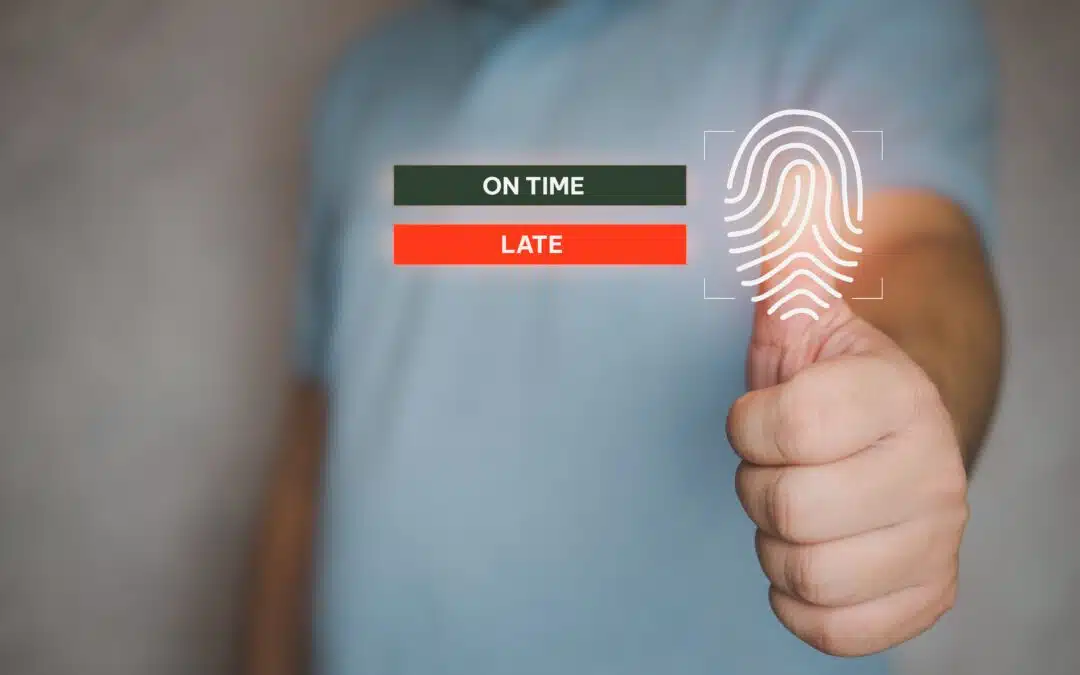Time and attendance is used by organisations to measure the exact time that employees work for them and is used in payroll and workforce management. In this article, we help you understand why you might need time and attendance software.

Businesses must monitor employee time and attendance to ensure compliance with labour laws and regulations, accurately process payroll, and manage workforce productivity.
Implementing a time and attendance system can benefit your business in many ways. Firstly, it eliminates manual timekeeping, reducing the time and effort required to manage employee time and attendance. Additionally, time and attendance software can help you to monitor attendance and reduce absenteeism. By keeping track of employee attendance, you can identify patterns of absenteeism and address them promptly.
Another benefit of time and attendance software is that it can help you to control labour costs. By accurately tracking employee hours worked, you can ensure that employees are paid for the hours they work and that overtime is calculated correctly. This can help you to avoid overpaying employees and reduce the risk of wage and hour violations.
Time theft refers to employees being paid for the time they did not work. Time theft can occur in various forms, including buddy punching (where employees clock in for each other), extended breaks, and unauthorized overtime. Time theft can severely affect businesses, including reduced productivity and increased labour costs.
Time and attendance is used by organisations to measure the exact time that employees work for them and is used in payroll and workforce management. In this article, we help you understand why you...
Time and Attendance Glossary
A key reason to implement a workforce management solution is the ability to manage time and attendance. This is often called Clocking In and Clocking Out or punching in and punching out, which comes...
Time and Attendance (T&A) software is a powerful tool for business owners, offering a range of benefits, from streamlining processes to saving time and money. However, it can be difficult to know exactly how...
Time and Attendance (T&A) is used by organisations to measure the exact time that employees work for them and is used in payroll and workforce management. In this article, we help you understand what...
Businesses must monitor employee time and attendance to ensure compliance with labour laws and regulations, accurately process payroll, and manage workforce productivity.
Implementing a time and attendance system can benefit your business in many ways. Firstly, it eliminates manual timekeeping, reducing the time and effort required to manage employee time and attendance. Additionally, time and attendance software can help you to monitor attendance and reduce absenteeism. By keeping track of employee attendance, you can identify patterns of absenteeism and address them promptly.
Another benefit of time and attendance software is that it can help you to control labour costs. By accurately tracking employee hours worked, you can ensure that employees are paid for the hours they work and that overtime is calculated correctly. This can help you to avoid overpaying employees and reduce the risk of wage and hour violations.
Time theft refers to employees being paid for the time they did not work. Time theft can occur in various forms, including buddy punching (where employees clock in for each other), extended breaks, and unauthorized overtime. Time theft can severely affect businesses, including reduced productivity and increased labour costs.
Choosing the right time and attendance system for your business can be a daunting task. There are many factors to consider, such as cost, does it have the features needed for your business, and ease of use. It’s essential to consider your options carefully before making a decision. Businesses should look for time and attendance software that has mobile capabilities. This can allow employees to clock in and out using their smartphones, which can be particularly useful for remote workers or those who frequently travel for work.
Implementing a time and attendance system is essential in streamlining your workforce and ensuring accurate record-keeping of employee hours. Choosing the right system for your business, implementing it, and integrating it with payroll can have numerous benefits, including increased productivity, improved accuracy, and reduced labour costs.
As technology continues to evolve, so too will time and attendance systems. One trend that is likely to continue is the use of biometric authentication, such as fingerprint or facial recognition, to clock employees in and out. This helps reduce the risk of employees clocking in for one another and provides a more accurate record of time worked.
Another trend is using artificial intelligence (AI) to analyze employee data and forecast insights into productivity and performance. This can help businesses to identify areas for improvement and optimize their workforce.